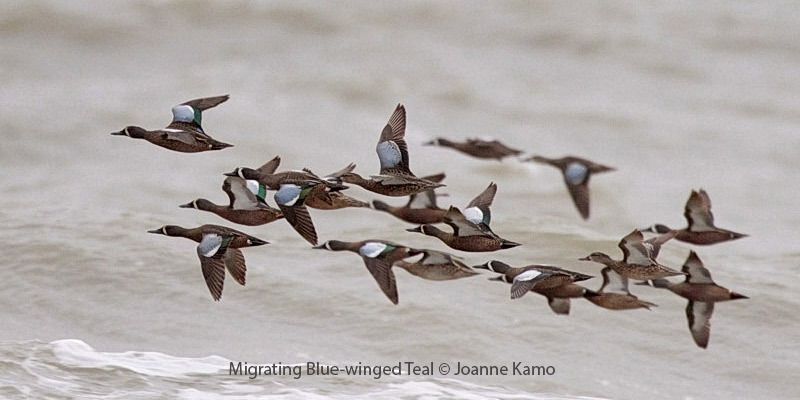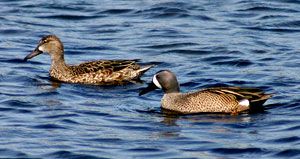
© Helen Baines
Blue-winged Teal Spatula discors
Family: (Anatidae) Ducks, Geese, and Swans
Preferred Habitat: Lakes and marshes.
Seasonal Occurrence: Common fall through spring. Uncommon in summer. Occasionally breeds in our area.
Notes by Vicki Stittleburg: Breeding males are brown-bodied with dark speckling on their rusty breast, have a blueish gray head and a bold white crescent on their face. Females are mottled brown overall, have a fairly bold dark eye line and a white throat. In early fall males resemble females, with adult males usually acquiring their breeding plumage by mid-November. In flight, a bold powder-blue patch on the upperwing coverts is visible.
Blue-winged Teal are the second most abundant duck in North America, behind the Mallard. A small dabbling duck, this bird feeds by tipping up its tail and dunking its head underwater. They consume sedge and grass seeds, pondweeds, duckweeds, and aquatic invertebrates. Blue-winged Teal are long distant migrants, summering as far north as the Canadian tundra and wintering mainly in Central and South America. They are among the latest ducks to migrate northward in spring, and one of the first to migrate southward in fall.
Blue-winged Teal can be observed on calm bodies of water from marshes to small lakes. The best sites to see them include Warren Lake and Brazos Bend State Park.
Profile by Rachel Myers: The Blue-winged Teal is a small dabbling duck and the second most abundant duck in North America. Breeding males have brown bodies with dense black speckles and a bluish-gray head with a bold white crescent in front of the eye. Females have a coarsely marked brown body with a darker cap and eye-line on the head. When in flight their wings show green secondaries and powdery-blue shoulder patches. Male calls are a high whistle or nasal bleat, while the females give evenly spaced quacks.
Blue-winged Teal typically nest in grasses or herbaceous vegetation and in the summer, they tend to forage in ponds or pond-marsh mixed habitats. During migration these ducks use marshes, wetlands, and shallow rice fields. They typically prefer to stop in freshwater or brackish areas rather than saltwater. Outside of the United States, these birds may use other related habitats, such as estuaries or mangroves in Central and South America.
Blue-winged Teal eat aquatic insects such as larvae, crustaceans, clams, and snails. These forms of protein are important for egg laying females. They also eat vegetation and grains such as seeds, which are the predominant foods in the winter. Blue-winged Teal feed by dabbling. They dip their bills in the water, submerging their entire head to reach prey or vegetation deeper underwater. Nests are made after a female has selected a nesting site, which may take several days, and are composed of dried grasses, down and breast feathers. A typical clutch size for these ducks can be anywhere from 6 to 14 eggs.
Blue-winged Teal are long distance migrants, and thus have an extensive range. They breed throughout the United States and Canada and migrate south to Central and South America for the winter. They winter as far south as Brazil and central Chile. Blue-winged Teal are permanent residents to the gulf coast of Texas and can be observed on calm bodies of water from marshes to small lakes in the area. A good place to look for them during autumn is Anahuac National Wildlife Refuge, where Shoveler Pond and the other bodies of water surrounding it is a common place they can be found.
-
Cornell Lab of Ornithology
-
Field Guide
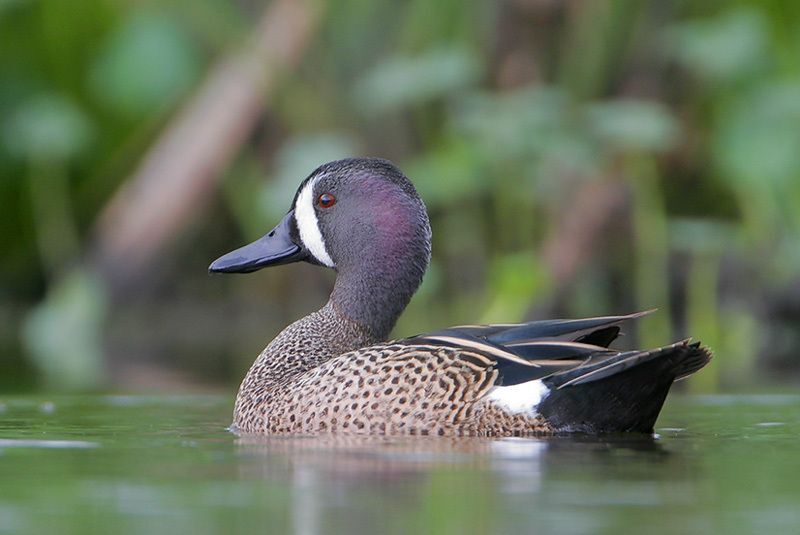
© Greg Lavaty, www.texastargetbirds.com
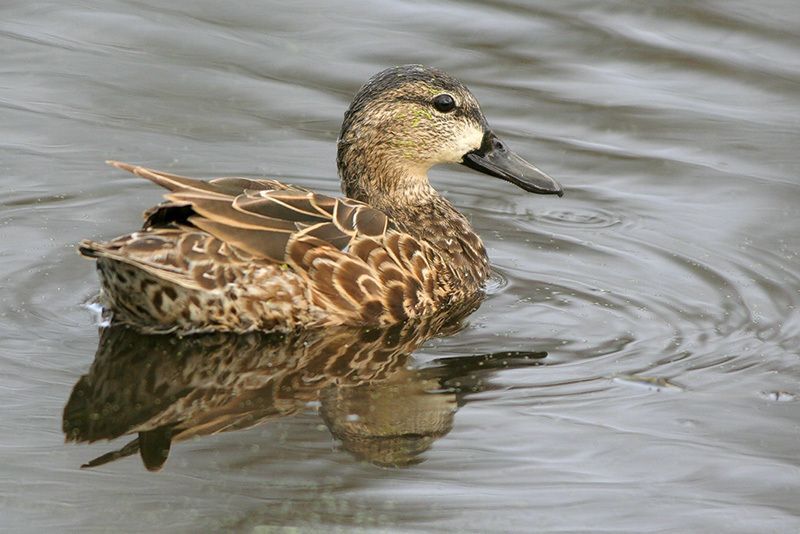
© Greg Lavaty, www.texastargetbirds.com
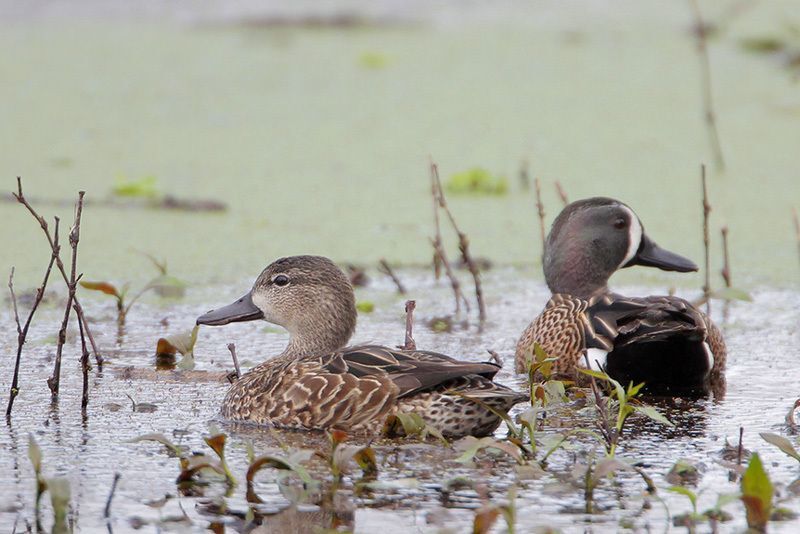
© Greg Lavaty, www.texastargetbirds.com
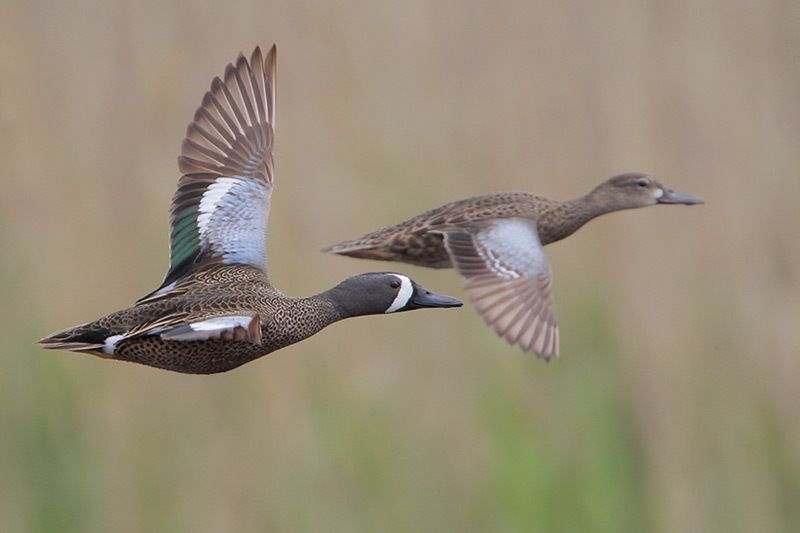
© Greg Lavaty, www.texastargetbirds.com

